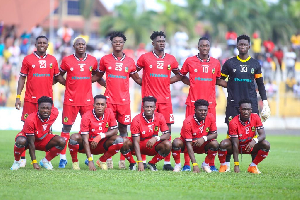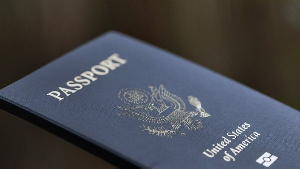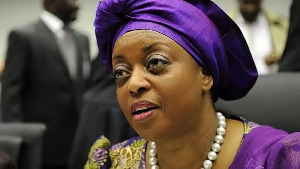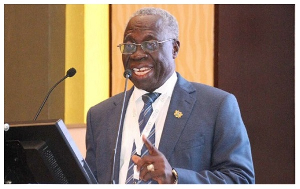The United Nation’s Department of Economic and Social Affairs estimate that there will be 1.3 billion more Africans by 2050.
From 2017 to 2050, it is expected that half of the world’s population growth will be concentrated in just nine countries: India, Nigeria, Democratic Republic of the Congo, Pakistan, Ethiopia, the United Republic of Tanzania, the United States of America, Uganda and Indonesia (ordered by their expected contribution to total growth).
Figures from the Institute for Security Studies (ISS) shows that Africa’s population is the fastest growing in the world and will account for nearly half of global population growth over the next two decades, with West Africa alone accounting for about 15 percent of the projected growth.
Presently, West Africa’s population accounts for roughly 31 percent of Africa’s population. From today’s rough estimate of 400 million people, equivalent to 5.16 percent of total world population, it is expected to increase to almost 580 by 2035 (United Nation 2020, worldometer 2020).
Growing populations according to the International Energy Agency (IEA) translates into rapid growth in energy demand for purposes of industrial production, cooling and mobility.
It means that, as population grows, the demand for services such as transportation, healthcare, communication, education, housing and infrastructure will increase.
Without electricity, economic transformation through improved productivity in manufacturing and services, technological innovations, and promotion of value-addition in resource-based economies would not be possible.
Insufficient supply of energy will limit socio-economic activities, restrict economic growth, negatively impact living standards, aggravate poverty and inequality, and hamper government revenues (Ahali 2015; IEA 2014). It goes to suggest that the need for electricity is critical in every economy.
Electricity Supply Challenges
IEA’s analysis of Africa Energy Outlook 2019 shows that in Africa the number of people gaining access to electricity doubled from 9 million a year between 2000 and 2013 to 20 million people between 2014 and 2018, outpacing population growth.
As a result, the number of people without electricity access which peaked at 610 million in 2013, declined slowly to roughly 595 million in 2018.
However, the IEA suggests that sub-Saharan Africa’s electrification of 45 percent in 2018 is still very low compared to other parts of the world.
The millions of people still without access to electricity in sub-Saharan Africa represents more than two-thirds of the global total.
About half of the region’s population without electricity access can be found in Uganda, Nigeria, Democratic Republic of Congo, Tanzania, and Ethiopia.
And of those without access to electric energy in sub-Saharan Africa, West Africa is reported to accounts for 30 percent, putting the average access rate across West Africa at 52 percent.
The demand for electricity in Africa today is 700 terawatt-hours (TWh), with the North African economies and South Africa accounting for over 70 percent of the total. Yet it is the other sub-Saharan Africa countries that see the fastest growth to 2040, according to the IEA.
West Africa’s inhabitants of close 400 million consumes a little over 100 terawatt-hours of electricity per year. It is estimated that by 2030, that demand will be more than 200TW-hr, a fourfold increase from where demand was in 2015.
But just like many other parts of the world, West Africa is grappling with daunting electricity supply challenges. The region’s power sector remain under-developed, requiring a huge expansion in its generation capacity and power grids.
According to John Timmer a science editor with Ars Technica, large hydro facilities in West Africa produce about 20 percent of the region’s electricity at the moment. The remainder is mostly supplied by a combination of natural gas and oil-fired generating plants.
The Climate Bit
While countries across West Africa grapple with the challenges of rising electricity demand and unreliable supply of existing terawatt-hours, climate change impacts mostly caused by harmful gas from fossil fuel combustion, are posing serious impacts to human health and environment.
Greenhouse gases (GHG) emitted from the burning of fossil fuels such as coal, petroleum and natural gas, are having a heavy impact on the region’s water resources, weather patterns, human health, food security et cetera, as evident in many African countries and the world as a whole world (Magadza CHD 2000, Droogers 2004).
To deal with the challenges of climate change, a regional revolution is required to complement global efforts. The goal is to combat man-made climate change and its impacts, hence the adoption of the Paris Agreement by countries to work to reduce their GHG emissions and to transparently report those results.
The Paris Agreement aims to strengthen the global response to the threat of climate change by keeping global temperature rise this century well below 2 degree Celsius (2°C) above pre-industrial levels, and to pursue efforts to limit the temperature increase even further to 1.5°C.
The Paris Agreement on climate change, along with the 2030 agenda, including the sustainable development goals (SDGs), forms the most comprehensive blueprint to date for eliminating extreme poverty, reducing inequality, and protecting the planet, according to the United Nation (UN).
Renewable energy resources are expected to play a leading role in meeting such global climate and sustainability imperatives. However, IEA’s analysis for 2019 Africa Energy Outlook (2020) suggest that to date, the continent with the richest solar resources in the world has installed only 5 gigawatts (GW) of solar photovoltaics (PV), less than 1 percent of the global total.
Africa’s vast renewables resources and falling technology costs is expected to drive double-digit growth in deployment of utility-scale and distributed solar PV, and other renewables, across the continent.
Aside from increased global consumption, a 2019 data recently released by the International Renewable Energy Agency (IRENA) shows that newly installed renewable power capacity increasingly costs less than the cheapest power generation options based on fossil fuels.
Additionally, existing hydro dams have been found to be able to act as virtual batteries for solar PV and wind electricity storage to deal with their unpredictable and variable nature, lessening the role of other storage technologies (Barasa, Bogdanov, Oyewu, and Breyer 2018). These recent feats renders renewables as the most preferable choice of fuels for power generation in a region where demand is growing.
Solar-wind-water Strategy
A new study has mapped the potential for solar-wind-water strategies for West Africa. The study, Smart Renewable Electricity Portfolio in West Africa, published in the scientific journal Nature Sustainability explores how hydropower plants can support solar and wind powers unpredictable and intermittent nature in a climate friendly manner.
The lead author of the study Sebastian Sterl, energy and climate scientist at Vrije Universiteit Brussel and KU Leuven, proposes that countries in West Africa are represented with the opportunity to plan their electricity generation expansion in line with strategies that rely on modern, climate-friendly energy generation.
According to Sterl, countries in Europe lack such an opportunity, with power supply in this region largely dependent on polluting power plants for many decades; a situation many countries now want to rid themselves of.
The study published by Sterl and Brecha (2020), demonstrates that it will be particularly important to create a “West African Power Pool,” a regional interconnection of national power grids.
By that, each West African country could contribute to a shared West African Power Pool for electricity supply, based on its own nationally available resources.
The study found that West African countries do already collaborate on electricity exchanges, but mostly through bilateral contracts, while plans are underway to integrate the national power systems into a unified electricity market on a larger scale.
The research suggests that cross-border electricity trade could make better use of hydropower, coupled with solar and wind. It identified countries with a tropical climate, such as Ghana and the Ivory Coast, which typically have a lot of potential for hydropower and quite high solar radiation, but hardly any wind.
Drier and more desert-like countries, such as Senegal and Niger, though hardly have any opportunities for hydropower, receives more sunlight and more wind. The researchers found that the potential for reliable, clean power generation based on solar and wind power, supported by flexibly dispatched hydropower, increases by more than 30 percent when countries can share their potential regionally.
The research concludes that all measures taken together would allow close to 60 percent of the current electricity demand in West Africa to be met with complementary renewable sources, of which roughly half would be solar and wind power and the other half hydropower, without the need for large-scale battery or other storage plants.
The work shows how these efforts could be streamlined with the growth of renewable electricity sources. Similar efforts according to the research are underway in other parts of the world, such as the European Union, where cross-border cooperation is also expected to become more important to scale up renewable electricity generation.
The study also finds that within a few years, the cost of solar and wind power generation in West Africa is also expected to drop to such an extent that the proposed solar-wind-water strategy will provide cheaper electricity than gas-fired power plants, which currently still account for more than half of all electricity supply in West Africa.
The adoption of the solar-wind-water strategy therefore presents itself as a bonanza, a great opportunity to harmonize West Africa’s increased electricity generation with climate change objectives.
The Author, Paa Kwasi Anamua Sakyi (aka Nana Amoasi VII), Institute for Energy Security (IES) ©2019 Email: paakwasi@iesgh.org
The Author has over 23 years of experience in the technical and management areas of Oil and Gas Management, Banking and Finance, and Mechanical Engineering; working in both the Gold Mining and Oil sector. He is currently working as an Oil Trader, Consultant, and Policy Analyst in the global energy sector. He serves as a resource to many global energy research firms, including Argus Media and CNBC Africa.
Opinions of Tuesday, 30 June 2020
Columnist: Paa Kwasi Anamua Sakyi, IES



















